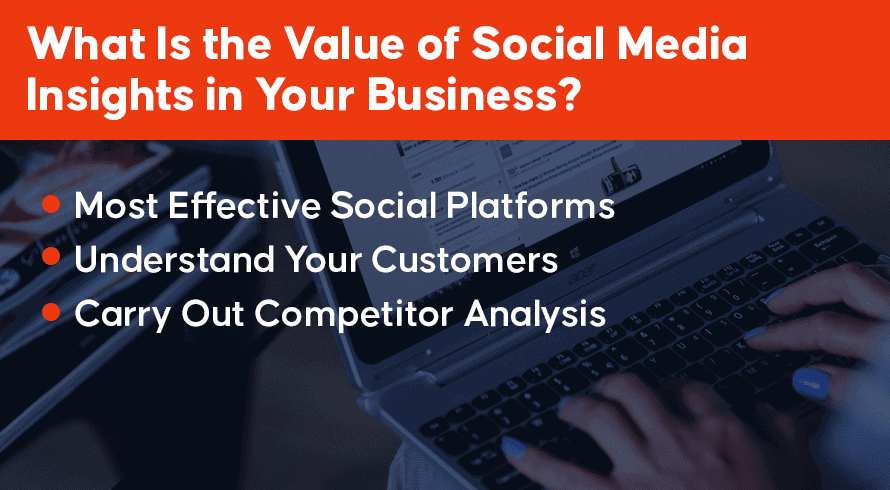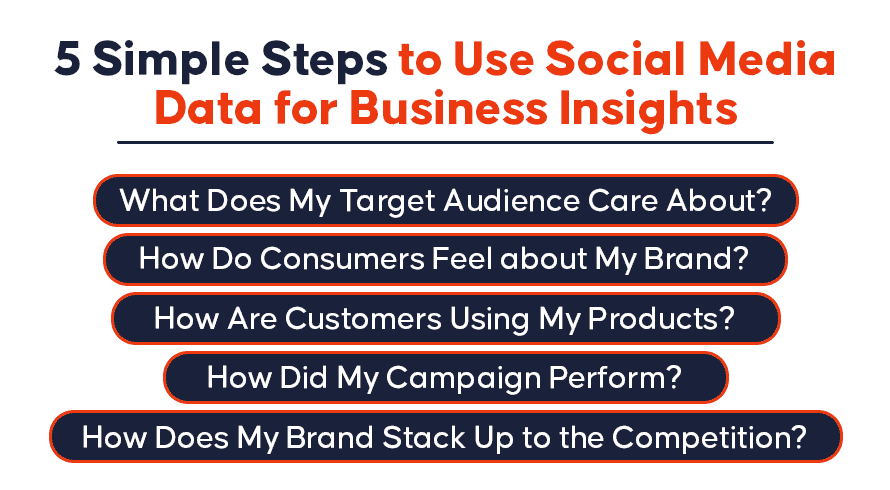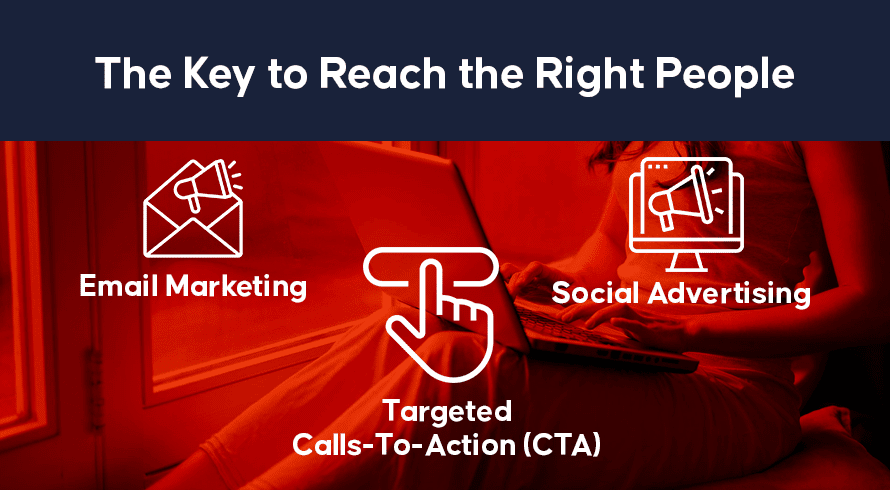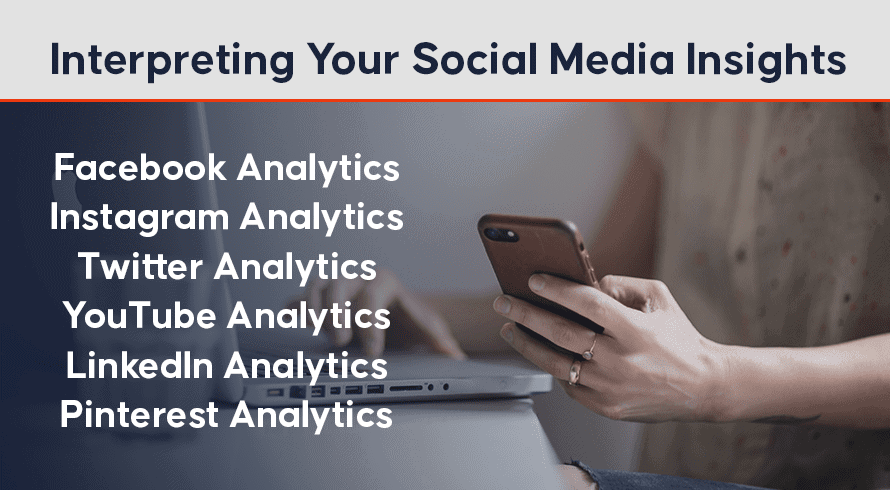Inquivix HQ
1-903, 18 Eonju-ro 146-gil,
Gangnam-gu, Seoul, Korea
06057

Social Media Insight is becoming more and more crucial to the success of small to medium-sized businesses or SMBs. Social media channels have become one of the most powerful market research tools because they need absolutely no traditional advertising methods. The data collected by social media platforms can provide the business with information about what their customers are doing each day, which they can use to improve future marketing campaigns.
Using social media analytics tools such as Google Analytics is essential for companies who want to harness this marketing potential without spending excessive time monitoring sites like Twitter or Facebook.
What Is Social Media Insight?
Social media insight provides analytics for businesses on different social media channels. It helps business owners understand how well their social media campaigns are performing, what content resonates with their audience, and how they can improve their social media strategy. Furthermore, it helps businesses understand the behavior of their audience which helps drive more targeted content. It helps companies manage multiple social media accounts, measure their overall performance on social media, and identify the best growth opportunities.
What Is the Value of Social Media Insights in Your Business?

There are several reasons why social media insights are so important for enterprises. The first is to know and understand your consumers. Using social media insights to succeed and grow in an increasingly competitive digital world is critical. Social media insights are an essential aspect of any social media strategy.
Without social media analytics, you can’t monitor or evaluate the effectiveness of your content, and there’s no way to achieve your objectives. By analyzing your social media insights, you can see which content resonates with your audience and which ones don’t. This information can help you create more of the types of content that your audience wants to see and less of the ones they don’t.
Most Effective Social Platforms
It’s important to remember that not all social media sites are created equal. Just because your Instagram has over 2 billion users doesn’t guarantee it’ll be the best tool for you to get the results you want. It’s conceivable that Flickr and Pinterest can assist you in executing your plan better.
Social media analysis can assist you in determining which social networking sites are the most effective for your business and why. It considers things like traffic, interaction, sales, and other metrics that help you make an educated decision. The findings can also help you use your resources more effectively, generate higher engagement rates, and compare the performance of social media platforms to determine what works best.
Understand Your Customers
You may use social media data to keep track of your social media following. It also allows you to determine what information engages and fascinates your audience. You may apply these consumer insights in a variety of ways. It can, for example, provide you with an analysis of your past post patterns and advise when is the most appropriate time to offer your material to the audience.
Timing is crucial regarding social media marketing, but you must not overlook content quality. Users come back for quality content and it is easier to retain them. This is essential in generating traffic, interaction, and conversions since it helps to build brand awareness, authority, and trust. Social media analysis breaks down the data into meaningful insights that people may utilize to improve outcomes.
Carry Out Competitor Analysis
Your rivals are also generating content and running social media efforts. And, if your audience is more interested in your competitor’s social media platforms, what aspects should you focus on to pique their curiosity and resonate with them? Analysis of competition may help you identify which tactics, campaigns, and social networks are effective for them and lead you to adapt your social media strategies accordingly.
When it comes to monitoring your company on social media, it should allow you to access it all, give detailed findings of your users’ activities, and improve your brand’s reputation. You also need to receive real-time insights and an insightful competitor analysis that will help you make wise judgments. When looking at the social data, you may establish a comprehensive plan and focus on strategies that lead to improved outcomes.
5 Simple Steps to Use Social Media Data for Business Insights
What issues is your audience most concerned about? How do people actually use your products? How was the campaign of your competitors compared to yours? These are all topics that every business wants to investigate. Consumers are constantly expressing their opinions about brands, goods, and a variety of other things on social media.
However, because there is so much data, distinguishing the signal from the noise may be difficult. Fortunately, social media analytics allows businesses to extract valuable insights from social data. The following are five of the most frequently asked questions that you may answer using social media analytics.

What Does My Target Audience Care About?
For most businesses, their intended audience is anyone who will buy from them or is influenced by their ads. With the popularity of social networking, businesses have their own social media following. It’s possible to know what your followers care about, which can help you develop more targeted content.
Social media research allows companies to obtain more detailed insights into their audience demographics, including age, gender, location, hobbies, and more. Moreover, social media analysis will enable you to watch how your audience grows in real-time. Understanding your target audience on a more intimate level assists you in developing the goods and campaigns that will appeal to them.
How Do Consumers Feel about My Brand?
The most valuable aspect of social media analytics is a real-time look into the consumer’s mind. You may quickly answer any inquiries about how customers feel about a company, product, campaign, or other issues.
In real-time, tracking consumer sentiment and emotion about your company or products may assist you in recognizing a win for your organization early on or preventing a potential catastrophe before it starts. Social media analytics can give you a detailed understanding of your consumers’ feelings about your brand. This information can help you decide how to improve your brand’s reputation.
How Are Customers Using My Products?
You can see what customers are saying on social media, which customers are interested in the new features, and the features they want to see next. How are customers using your products in the real world? Millions of photos are uploaded to social media every day, demonstrating how people use your products in the real world, even if they do not mention your brand or product name.
Analysis of these images gives you a better picture of what’s going on on social media. Identifying moments of consumption in photos allows businesses to see how consumers use their products. Rather than focusing just on what customers say, you can figure out what they’re doing.
How Did My Campaign Perform?
It’s challenging to assess the overall impact of a worldwide marketing campaign. Yes, modern digital marketing makes it simple to keep track of clicks, views, and likes, but what about the big picture? Are you reaching your intended audience? It’s essential to measure your campaign performance!
Having good social media insight provides impressions and clicks on your post and ads, how many times and where your ad was seen, geofencing area and radius around a geofence, and keywords and hashtags associated with the post/ads you’re running. This information is important to a social media marketer to measure the performance of digital strategies employed.
How Does My Brand Stack Up to the Competition?
What are your competitors doing to capitalize on the success of your new product line? What reactions have consumers had to your customer service? Social media monitoring provides real-time insights into how consumers feel about anything without the need for surveys or research results.
You can compare your brand’s performance to that of your competitors through social media analytics. The findings help you make quicker, data-driven strategy decisions to stay one step ahead of your competition. This information can help you identify where your brand needs improvement and develop strategies.
The Key to Reach the Right People
People love using social media to share their opinions and experiences about a company. Hence, marketers need to capture those conversations to paint a complete picture of customer interactions with the brand. Social media insights allow marketers to get inside the minds of those they’re talking with at any one moment.
Community managers can use platform data to help them develop brand material and customer communication methods. Community managers may now analyze information about their content and followers and engagement stories to understand better how they are performing.
Marketers are better positioned to fine-tune their brand campaigns’ content strategies and targeting. We’ve laid out some of the essential places where social insights can assist marketers in reaching the correct individuals, saying the right things, and building brand advocates along the way.

Email Marketing
The days of firing off the same content to everyone on your email list are long gone. People sign up for brand emails to receive material that is relevant to them. You may now track customers’ online activities and behaviors to figure out who they are, what they want, and build a message specifically for them.
Marketers may use cookies and JavaScript code to follow audiences across websites. For example, marketers can track products that different customers have viewed and send a separate email to that customer type. This practice is known as “retargeting” or “remarketing” and helps brands focus on consumers who have visited the website but bounced off before making a purchase.
Social Advertising
When companies tailor their communications to targeted user groups, they enhance the probability of making a conversion. There’s a good chance that these targeted users will have a positive interaction with your business. You may use social media insights to determine your target audience.
Targeted Calls-To-Action (CTA)
When it comes to online marketing, one of the most important aspects is the call-to-action (CTA). A CTA is an instruction to the reader or viewer to do something, and it’s essential for getting people to take the desired action. To create effective CTAs, you need to understand the psychology of persuasion.
You need to consider several different factors when creating a CTA. The most important is making sure that your CTA is relevant to your audience. It would help if you also clarified what you want the person to do and made it as easy as possible for them to do it.
Finally, you need to make sure that your CTA stands out from the rest of the content on your site. In this case, a CTA like “Call Us Today” or “Visit Our Website” might be more effective than something like “Get a Quote” or “Download Our App.”
Interpreting Your Social Media Insights
Now that you have your social media analytics, it’s time to interpret the data. What trends are you seeing in your audience? What are they responding to? What are they sharing? You can use your social media insights to help guide your business strategy. For example, if you see that a specific type of content is performing well, you can create more of that content. Or, if you see that your audience is growing, you can invest more resources into marketing on social media. The bottom line is that social media analytics give you the insights you need to make informed decisions about your business. You can optimize your marketing strategies and achieve better results with the correct data.
Facebook Analytics
Facebook analytics provides you with a lot of possibilities. Here are some essential metrics to evaluate to gain a deeper understanding of your brand’s Facebook page and what you may learn from it.
User Demographics
Thanks to its robust demographic data, Facebook insights have a wealth of information about your audience. The more you know about who your actual audience is, the better you’ll be able to tell whether or how well you’re reaching them. It will even provide you with insight into untapped audiences.
Reach
To grasp how far your content reaches, see what percentage of the audience has engaged with it. Facebook offers you two types of reach: organic and paid. Pay attention to any spikes in organic reach and figure out what caused your audience to respond so favorably that day.
Lost Followers / Unlikes
There are other things you should be concerned about. One indicator that Facebook sets apart is the number of individuals who disliked, unfollowed, muted your postings, or reported them as spam. While this dislike ratio may be a terrible number to look at, it does provide helpful information.
Individual Post Data
You can look up individual posts’ statistics, such as reach, impressions, likes, shares, and comments. Studying these numbers may help you figure out what to do next with your blog content.
Video Analytics
Another distinguishing feature of Facebook is its in-depth video analysis. You can see how many people watched your video, including how many people watched it all the way through rather than stopping before the conclusion. These metrics allow you to better understand what works and what doesn’t for your Facebook videos.

Instagram Analytics
While Instagram provides the most basic analytics, you may still learn a lot from what they provide if you know how to look for it. Here are some of the most important metrics to check when examining your Instagram analytics.
Saved
This function is handy for new bloggers who are still figuring out how to use this tool effectively. For example, if you see that 10% of your audience has saved your postings, there’s a good chance they found it valuable! If 50% of your subscribers save your post, this tells you that this content was beneficial.
Reach
Reach tells you how many distinct personalities have seen your postings. In contrast to views, which indicate the overall number of times your material has been viewed, unique personas see your postings only once. People who view your post more than once may be included in impressions.
Engagement
Engagement helps you understand how many comments and likes your postings are getting. Paying attention to the most engaging posts will tell you what sorts of material your audience enjoys the most.
Twitter Analytics
It’s one thing to know where to find them. It’s entirely different to comprehend what they mean and how to utilize them. There are a lot of options with Twitter analytics. Here are some significant numbers to examine for you to have a deeper understanding of your company.
User Demographics
Twitter’s breakdown of your followers’ demographics is an essential tool for you, allowing you to get a genuine sense of your audience. You may study your audience by interests, lifestyle, consumer habits, location, employment, and other factors. Maintaining track of these statistics can help you figure out who you’re connecting with and assist.
Mentions
This statistic shows you how many times people mentioned your username in a tweet or discussion.
Retweets, Favorites and Replies
Favorites, retweets, and replies show what content users find engaging. Twitter analyzes each of these components by Tweet to provide helpful information about your greatest hits.
YouTube Analytics
The metrics that you pay special attention to when using YouTube Analytics are the following.
Number of Videos Watched
The first metric, the number of videos watched, is pretty self-explanatory. This metric tells you how many videos your audience has watched on your channel.
The Views without Engagement
The second metric, views on a video without engagement, can be confusing. This metric measures the number of views without any engagement actions such as likes, comments, or shares.
Average Monetizable Impressions per Video
The third metric, average monetizable impressions per video, measures the amount of estimated revenue you’ve earned from 1,000 views on your channel.
Likes, Comments, and Shares
The last metric measures how many people have engaged with each video on your channel. Engagement actions include likes, comments, or shares.
LinkedIn Analytics
LinkedIn Analytics can provide you with valuable information about your business and how you are using LinkedIn to reach your target audience. The following are some of the most important metrics to pay attention to.
Profile Views
This metric tells you how many people have viewed your LinkedIn profile. You can use this information to determine which LinkedIn content is the most popular and which types of content you should create more of.
Followers
This metric tells you how many people have chosen to follow your company on LinkedIn. You can use this information to determine which content is the most engaging and which types of content you should create more of.
InMail Sent
This metric tells you how many InMail you have sent in total. You can use this information to determine which types of content are the most successful at generating leads or sales.
Pinterest Analytics
Since Pinterest is such a visual site, it’s essential to track how your posts are received visually. Pinterest Analytics allows businesses to track impressions and engagements among followers on this site. You can also follow the growth in your follower base by using this tool.
Reach
One metric to pay special attention to on Pinterest is reach. Reach can help you gauge what people you follow, like, and comment on your content the most. Knowing the type of content that resonates best with your followers can help you figure out what kind of content should be shared in the future.
Pins and Likes
Other metrics to pay attention to include total pins, total likes, total re-pins, and total comments. Real likes and full comments allow you to see how many people are engaging with your business content, allowing you to see your most loyal fans.
Conclusion
Every social media network has its analytics that allows users to track important information about their following and engagement rates on the site. Using social media insights will enable businesses to determine better their strategy for future posts based on what is working well and what is not. Additionally, insights can help companies better understand their followers, what content they are interested in and how to keep them engaged.
